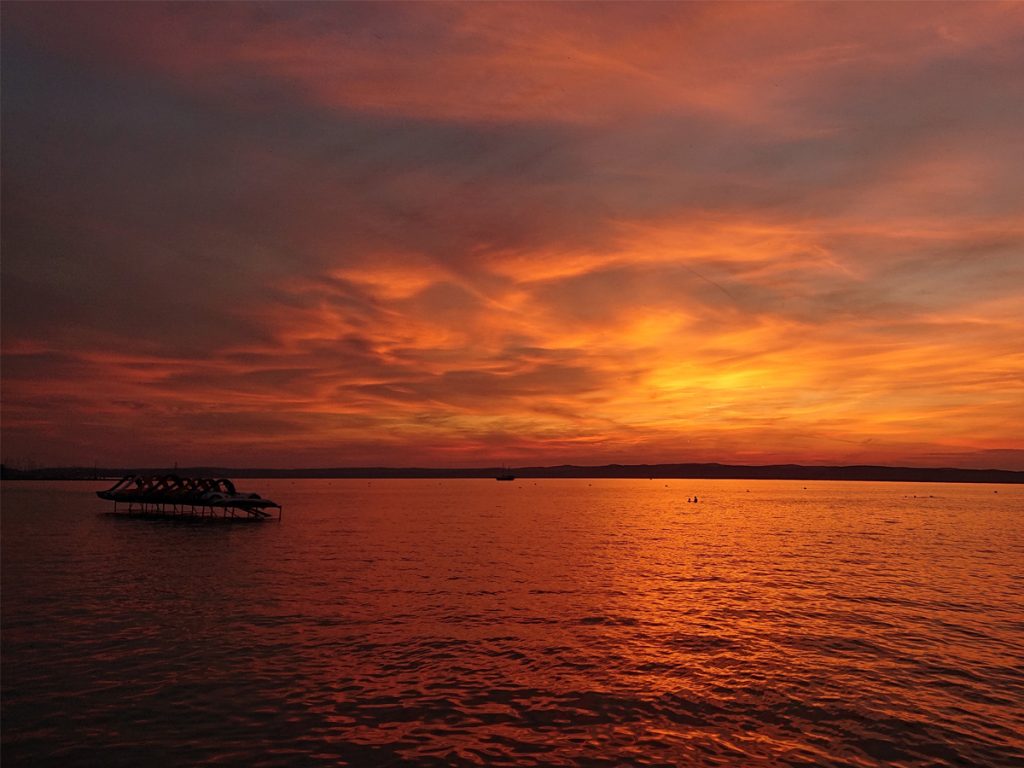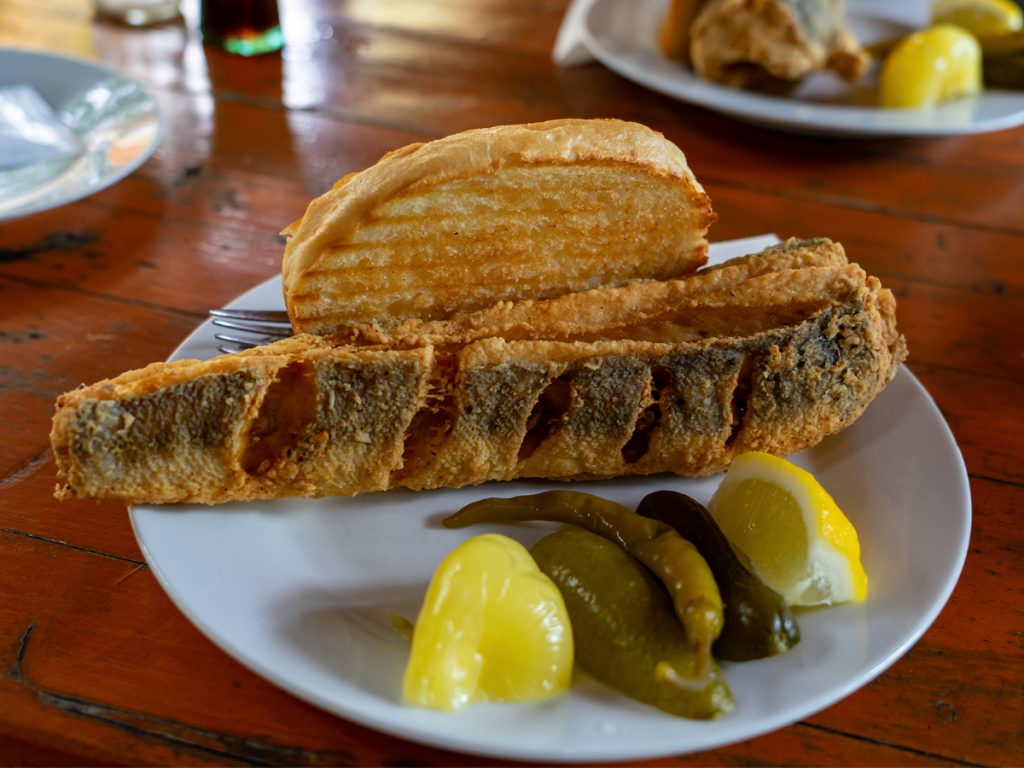What do you know about Hungary? Yes, it’s entirely landlocked, one of Europe’s greatest rivers, The Danube, flows through much of the country, and it’s the home of goulash. There’s also a Lake Balaton. A beautiful, vast freshwater lake covering some 230 square miles. So, bearing all of this in mind, what do you think is Hungary’s favourite fish to eat?
Lake Balaton is the country’s most popular domestic tourist attraction. The lake is stunningly beautiful and for a country that no longer has its own coastline, it’s easy to see the appeal.

What’s going on there?
A few summers ago, I was at Balaton. It was a roasting hot day. The perfect day for being lakeside. Some trashy euro-pop played in the background somewhere. The lake was busy with paddlers, swimmers, frolickers, and the like. Those less actively minded remained on shore, sleeping, chatting, laughing, drinking fruit beers – the normal holiday affair. Balaton was magnificent that day.
It was around lunchtime on this wonderful day that something strange began to happen. A long line formed from a small kiosk, from where the scent of fish and chips lifted on the refreshing Balaton breeze. “What’s going on there?” I asked. “Oh, they’re queueing for Balaton Hake.”
At first, I thought I’d misheard. Those fruit beers can be quite strong you know. As it transpires, I didn’t mishear. Hungary has a thing, a big thing, for Hake.
Served with fermented cucumbers
Battered, deep-fried and served with chips and fermented cucumbers, Balaton Hake is in fact very similar to our own fish and chips (minus the fermented cucumbers – which are actually very good). It’s a lakeside treat. It’s also very popular. Such is Hungarian’s enjoyment of Balaton Hake, it can now be found not just on the shores of the lake, but throughout the country.
Now, we all know that Hake is a saltwater fish. In complete contrast, Lake Balaton is a freshwater lake. Clearly, the Hake being served from the little lakeside kiosks is not from the lake itself. The name ‘Balaton Hake’ is nothing more than a marketing ploy, albeit a very clever one.

Whilst queuing for my own Balaton Hake I began to wonder what the mysterious ‘Balaton Hake’ actually was and where on earth it was from.
Initially, I thought the fish could be a freshwater equivalent of a Hake – similar appearance, taste, that kind of thing. However, on taking my first bite it was clear that the fish was indeed Hake.
I thought perhaps the fish was sourced from the Mediterranean or Black Sea, but again, I was wrong.
The real Balaton Hake
The story of how Hake became Hungary’s favourite fish goes back to the early 1970s.
As a result of over-fishing and pollution of Lake Balaton, the country was in desperate need of a new source of fish. That’s when the powers-that-be hit on the idea of Hake, but not Hake from relatively local sources such as the Mediterranean or Black Sea. No, Balaton Hake is in fact caught off the coast of Argentina, Chile, and Peru.
It is suggested that some Hungarians remain unaware of this fact, and still believe that Balaton Hake is caught from the lake itself. Either way, Balaton Hake is now a firm favourite of Hungarians. Indeed, it’s even been described as ‘cult summer food’.
So, there I sat, by the lake, tucking into my very own Balaton Hake, watching as those all around feasted on their Hake. It’s strange looking back to think that, there we all were, sitting by a freshwater lake eating Hake from the other side of the world – and most of us probably had no idea.
Balaton Hake is now very much a Hungarian tradition, and it must be said, an enjoyable one. However, it should also be a lesson to us all, and the results of overfishing and poor environmental management.
With European Hake classed as green-rated and a Best Fish to Buy by the Marine Conservation Society, now’s the perfect time to have go a recreating your own Balaton Hake using this recipe.